#paramilitary and militia
Text
Watch: New photo shows Wagner leader Prigozhin in Russia
New photo shows Wagner leader Prigozhin in Russia
Wagner founder and financier Yevgeny Prigozhin has been spotted in St. Petersburg meeting with an African dignitary on the sidelines of the Russia Africa summit, according to accounts associated with the mercenary group. CNN’s Nic Robertson reports.
Source link

View On WordPress
#&010;&010;new#africa#brand safety-nsf sensitive#brand safety-nsf war and military#conflicts and war#continents and regions#domestic alerts#domestic-international news#eastern europe#europe#featured#financial#Investing#leader#misc organizations#misc people#money#news#nic robertson#paramilitary and militia#photo#prigozhin#reviews#russia#shows#St. Petersburg#talk#Tools#unrest#wagner
0 notes
Text
Wagner's Prigozhin apparently seen in public for first time since failed mutiny
CNN
—
A video emerged on Wednesday that appears to show Wagner founder Yevgeny Prigozhin greeting his fighters in Belarus, in what would be his first public appearance since he led an armed rebellion in Russia last month.
“Welcome guys! I am happy to greet you all. Welcome to the Belarusian land! We fought with dignity! We have done a lot for Russia,” a man resembling and sounding like…

View On WordPress
#2023 russia paramilitary rebellion#alexander lukashenko#belarus#brand safety-nsf sensitive#brand safety-nsf war and military#conflicts and war#continents and regions#domestic alerts#domestic-international news#eastern europe#europe#iab-war and conflicts#military#misc organizations#misc people#paramilitary and militia#political figures - intl#russia#russia-ukraine conflict#ukraine#unrest#vladimir putin#wagner group#yevgeny prigozhin
0 notes
Text
There are tens of thousands of them, these figures cited are much too low. Further these groups often overlap; III%ers, Patriot Prayer, Proud Bois, Boogaloos, Klan, Atom Wagfen, Aryan Nation, Posse Comitatus, Sovereign Citizens, Hutaree, Idaho/Pensylvania/Texas, New York Light Foot Militias, Ohio Defense Force, Michigan/Montana/Missouri Militias, Army of God, and many, many more.
#never trump#oaf keepers#republican assholes#traitor trump#armed militias#private armies#Republican warlords#gun control#gun violence#crooked donald#oath keepers in government#assault weapons ban#anti-militia laws#anti government armed militias#unlawful rightwing paramilitary groups
111 notes
·
View notes
Text
Dan Nan Ambassagou - ethnic Dogon militia🇲🇱


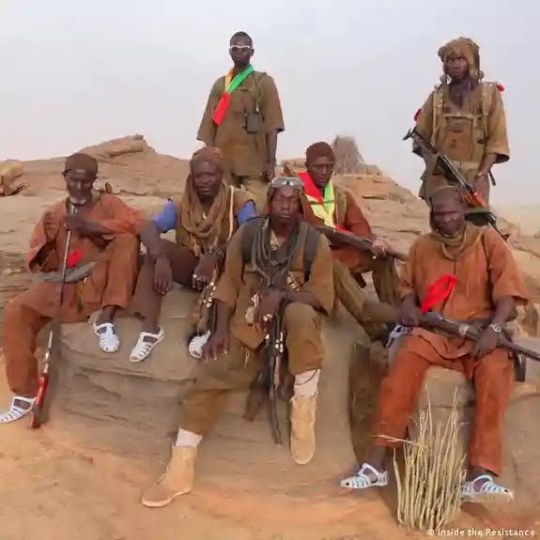

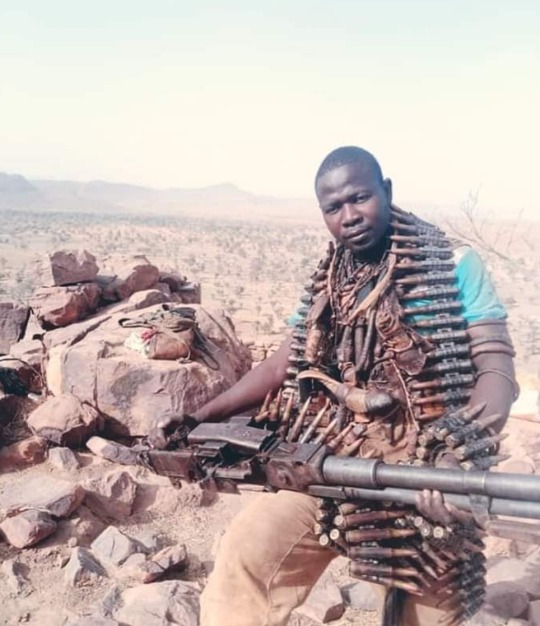
14 notes
·
View notes
Note
Favorite PolSci paper?
...you should really know not to expect anything resembling concision from me, my friend.
So, uh...I'm not even gonna try to pick one.
The thing about me and political science is that I skew a lot closer to the humanities end of the analytical pool; I tend to be more inductive than deductive and it shows. I also tend to be skeptical of most work's explanatory power, and extremely skeptical about anything claiming predictive power. My favorite work tends to incorporate historical research and ethnographic data, and I tend enjoy critique papers and theory building. I tend to like "mid-level" approaches, where people try to study a specific phenomenon rather than going for large unifying theoretical questions, because I favor smaller knowledge claims with more data behind them. It's harder to build than tear down, and unfortunately I just love "tearing down" work. That said, there are some things that are really hard to research, and I'm always impressed by scholars who manage to do it well, either by spending a lot of time building trust or else by thinking of novel measures.
Kathleen Collins has a neat paper that tries to understand something really dang hard to research: banned underground movements in Central Asia. It's called "Ideas, Networks, and Islamist Movements: Evidence from Central Asia and the Caucasus." Specifically, she's looking at the spread of social movements that politicize Islam, and why they might succeed and take root in the face of governmental opposition or fail.
What I like in particular about the piece (in addition to the interview data she managed to collect from people involved in very illegal movements in generally illiberal states) is that she proposes mechanisms for the spread of a particular ideology in the face of state repression rather than just assuming "well, it's an Ideology! It's powerful!" She looks specifically at ideational fit and recruitment/idea networks (i.e. how the word is spread), and whether they're inclusive or exclusive networks (more about the "not us" or more about "join together").
It's ultimately case study research, but unlike a lot of case studies, convenience is decidedly not a driving factor behind her particular cases because she picked one of the hardest things to get people to talk about outside of a war zone. And of course, she gains a lot of respect from me by realistically assessing the implications for her paper (nothing turns me into a shark faster than people claiming greater explanatory power than their paper actually provides). So. Great insights, she really interrogates the mechanisms she proposes (which is absolutely what you have to do if you're theory-building with case studies), and she incorporates both extensive interviews from focus groups, political leaders, and surveys.
There's a series of pieces about Euromaidan by Volodymyr Ishchenko that I really enjoyed. The first is more or less introducing a database recording Euromaidan protest events that I admire. It does a good job being thorough and controlling for common biases from databases made up of media reports (skews towards big cities, sensationalist events, etc). I'm impressed by the dataset, and find the analysis particularly interesting.
Ishchenko really digs into what Euromaidan looked like on the ground and how it manifested regionally, who was involved, and what happened at protests. A bunch of scholars were going back and forth on whether Euromaidan was actually violent or not or what the degree of state involvement was, but he pretty convincingly argues that most of these arguments are based on...well, not cherry-picked exactly, but non-comprehensive evidence.
So you get one person who is saying stuff like "it was totally organized violence" and another saying "it was totally peaceful and state-escalated" and "it was mostly organized by the far-right" and "it was totally a popular protest" and frankly, based on their evidence, none of those contradicting claims were wrong because nobody was comprehensively analyzing what actually happened in all the protests and paying specific attention to who, what, where, and when incidents happened.
So he argues that most protests were peaceful, but there are specific regional trends, and eastern protests tended to be much less popular but had a higher concentration of far-right organizers, which is why some people can honestly say it was like a coup while a lot of other people can say "it was just a popular protest." He also identifies who exactly was involved, and when, and where, which is really important; in a followup article, Ishchenko IDs the groups with the resources to "[initiate] and [diffuse] efficient, coordinated, and strategic violence" and talks about how when Euromaidan was violent &/or radicalized, who was involved, and why. So who specifically was involved, who had organizational knowledge and violent knowledge, and when/where were they involved?
The concept of violent organization or escalation to violence is really interesting because people tend to separate peaceful from violent organization like they're two separate phenomenons or people assume that violent stuff was always going to be violent (scholars of violence are especially prone to only studying events where violence occurred, and when you want to know why something happens, it's really really important to look at why it might not happen). So I like what Ishchenko does.
My appreciation for Ischenko comes largely from a neat article by Charles King called "The Politics of Microviolence" which makes the assertion I just mentioned about violent and non-violent events being part of the same phenomenon. His piece is mostly a critique of the literature that then highlights two papers doing it well. (he argues we need to think smaller instead of only looking at large-scale violent events, and we need to consider when violence doesn't happen when it could have).
Oh man, there's a lot of really good work that I'm leaving out. Most of it is on civil war, paramilitaries and militias, and socialization to participate in violence (there's a really interesting study that says we basically assume it's easy to get people to be violent, then says that's not necessarily the case because that socialization fails, then works with with Israeli defectors). But my list kept growing and so I'll stop here.
The challenge with all scholarly work is that the more specialized you get, the easier it is to get siloed and unfortunately, it does get easier to take methodological assumptions as facts. For all the buzz around interdisciplinary stuff, there is a reason people specialize. I tend to be a connection-minded person and so I eat up work that combines disciplines well or critiques methodological assumptions that put two things into stark categories. But there's often a pretty good reason why those categories develop. Thus is the nature of scholarship...
Bibliography
Collins, Kathleen. 2007. "Ideas, Networks, and Islamist Movements: Evidence from Central Asia and the Caucasus." World Politics; World Pol 60 (1): 64-96. doi:10.1353/wp.0.0002.
Ishchenko, Volodymyr. 2016. "Far Right Participation in the Ukrainian Maidan Protests: An Attempt of Systematic Estimation." European Politics and Society (Abingdon, England) 17 (4): 453-472. doi:10.1080/23745118.2016.1154646.
Ishchenko, Volodymyr. 2020. "Insufficiently Diverse: The Problem of Nonviolent Leverage and Radicalization of Ukraine’s Maidan Uprising, 2013–2014." Journal of Eurasian Studies 11 (2): 201-215. doi:10.1177/1879366520928363. https://doi.org/10.1177/1879366520928363.
King, Charles. 2004. "The Micropolitics of Social Violence." World Politics; World Pol 56 (3): 431-455. doi:10.1353/wp.2004.0016.
#none of this is even getting into my big critique of a lot of literature#which is that i was trained in a field that just loves states#which means a lot of people i know about who study violence are asking it from the field of security#and security is about the security of the state#so it divides people pretty starkly based on their pro- or anti-government affiliation#and i'm not satisfied with that analysis#idk it's kinda like what volkov says in violent entreprenuers: we draw a line between organized crime and legitimate business#like there's a fundamental difference between state-sanctioned economic activity and state-criminalized economic activity#or state-sanctioned violence and non-state-sanctioned violence#and i don't think two types of the same behavior are fundamentally different just because they where they operate vis-a-vis the state#same thing with violence. who's to say the natural state of violence is that the state has a monopoly on it?#specifically. i think it's wrong and ahistorical to assume it's an anomaly when non-state actors engage in violence#even organized violence.#so yeah...i do think there's a difference between paramilitaries like SWAT and many militias#but rebel groups and state-aligned militias? not so much. or at least that's my current hypothesis based on what i've read#would like to do more research but alas. that's hard and i'm not willing to go for a phd in the foreseeable future#asks
7 notes
·
View notes
Text
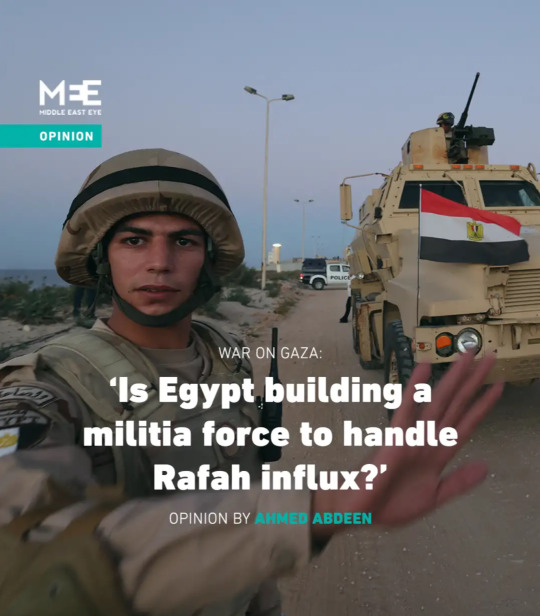
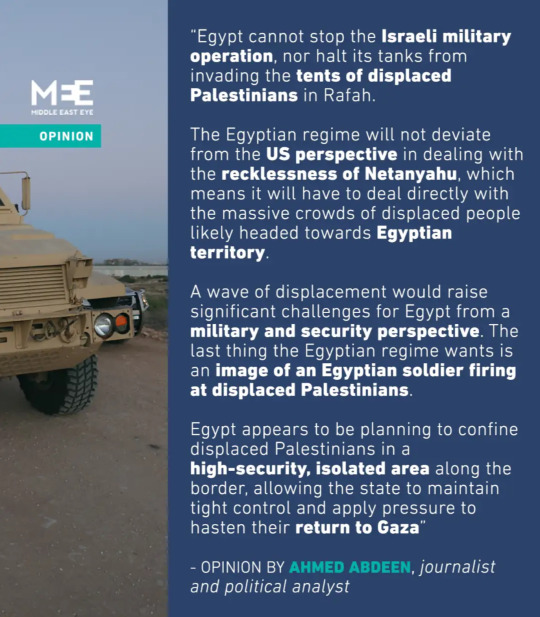
"In a grand procession last week, Sinai Militia Leader Ibrahim al-Organi arrived at a ceremony to inaugurate the Arab Tribes Union, a new Paramilitary entity that brings together five tribal groups from across Egypt.
The formation of this alliance comes at a critical time and place, as Israel this week launched a long-threatened ground offensive against the Palestinian city of Rafah, just a short distance from where the Egyptian ceremony was held. Around 1.4 million displaced Palestinians have been sheltering in Rafah since Israel launched its war on Gaza last October.
Early on, Egypt started taking precautions for this scenario, overlooking many humanitarian details. It reinforced the fences and barriers along its border, tightened border security, and mobilised support and funding for alternative camps within Gaza itself.
The last thing the Egyptian regime wants is an image of an Egyptian soldier firing at displaced Palestinians.
Through the newly minted Arab Tribes Union, the regime might have found its only option for handling this situation, while avoiding the direct involvement of state soldiers.
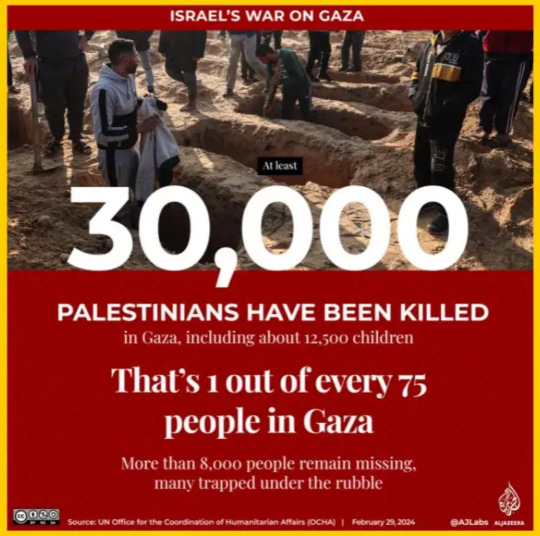
A third mass grave has been uncovered at al-Shifa hospital in Gaza City. Palestinian officials say they've exhumed 49 bodies, and the recovery process is still underway.
Organi is a prime choice to lead this task after his previous successes in organising the Union of Sinai Tribes, which worked alongside the Egyptian army to fight an Islamic State affiliate, and in running companies that manage the movement of people and goods between Gaza and Egypt.
But Organi's companies have also faced allegations of exploitative behaviour, including charging millions of dollars from Palestinian refugees fleeing war.
And there are significant risks that under difficult humanitarian conditions, his forces could become involved in smuggling operations, financial extortion, or other types of corruption - not to mention the inherent dangers of forming armed militias, which can prove disastrous to the security and stability of states"
— ✍️ Ahmed Abdeen
#Middle East Eye 👁️#News 🗞️#Rafah | Gaza | Forever Palestine 🇵🇸#Egypt 🇪🇬#Sinai Militia Leader | Ibrahim al-Organi#Arab Tribes Union#Paramilitary#Al-Jazeera
0 notes
Link
Important research is being done by Alisa Mahjoub on the Unification Church’s role in international fascism, including the contemporary Rod of Iron Ministries, or Sanctuary Church, led by Hyung Jin “Sean” Moon.
Alisa on Twitter
Alisa on Patreon
#alisa mahjoub#paramilitary#rod of iron ministries#moonies#unification church in the united states of america#unification church in usa#unification church in the united states#hyung jin moon#sean moon#sanctuary church#far-right politics#militia#politics#counterinsurgency#FBI#intelligence agencies#parapolitical#parapolitics#operation gladio#surveillance#christopher thompson#cj thompson#craig sawyer#rod if iron ministries#fascism#anti-fascism#anti-imperialism#imperialism
0 notes
Text


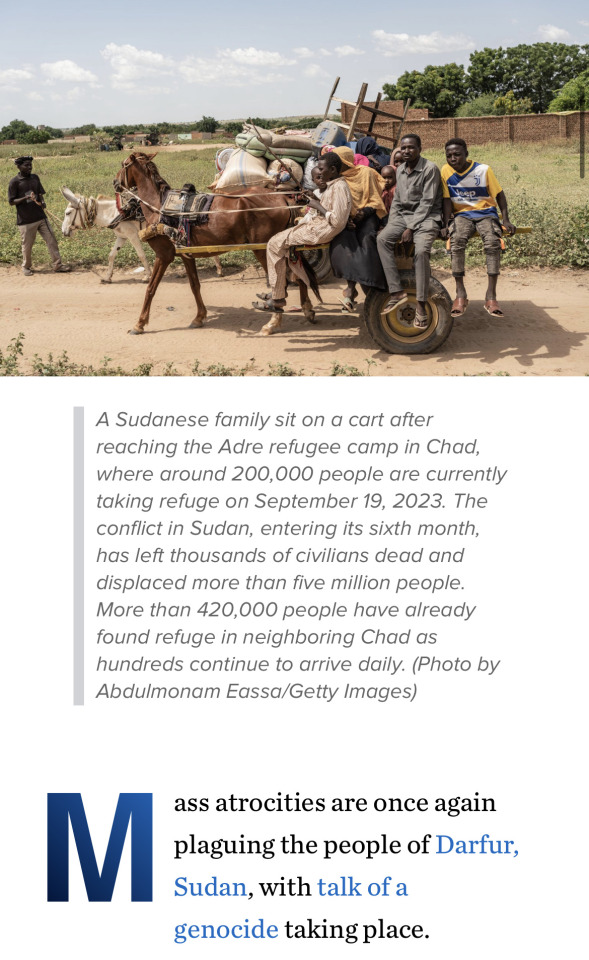
CNN:
Hundreds of families gathered in the West Darfur capital of El Geneina on June 15, plotting their escape from what had become a hellscape of blown-out buildings scrawled with racist graffiti and streets strewn with corpses. The state governor had just been executed and mutilated by Arab militia groups, leaving civilians with no choice but to flee.
What followed was a gruesome massacre, eyewitnesses said, believed to be one of the most violent incidents in the genocide-scarred Sudanese region’s history. The powerful paramilitary Rapid Support Forces and its allied militias hunted down non-Arab people in various parts of the city and surrounding desert region, leaving hundreds dead as they ran for their lives…
…residents set off en masse from southern El Geneina, many trying to reach the nearby Sudanese military headquarters where they thought they might find safety. But they said they were quickly thwarted by RSF attacks. Some were summarily executed in the streets, survivors said. Others died in a mass drowning incident, shot at as they attempted to cross a river. Many of those who managed to make it out were ambushed near the border with Chad, forced to sit in the sand before being told to run to safety as they were sprayed with bullets.
“More than 1,000 people were killed on June 15. I was collecting bodies on that day. I collected a huge number,” one local humanitarian worker, who asked not to be named for security reasons, told CNN. He said the dead were buried in five different mass graves in and around the city.
Conflict erupted between the RSF and the Sudanese army in April. Since then, more than one million people have fled to neighboring countries, according to estimates from the International Organization for Migration.
Now, a telecommunications blackout and the flight of international aid groups have all but cut off Darfur from the outside world. But news of the June 15 massacre began trickling out of the region from refugees who escaped to Chad. The evidence uncovered by CNN suggests that, behind a curtain of secrecy, the RSF and its allies are waging an indiscriminate campaign of widespread killings and sexual violence unlike anything the region has seen in decades.
The RSF’s official spokesperson told CNN that it “categorically” denied the allegations.
“To say you were Masalit was a death sentence,” said Jamal Khamiss, a human rights lawyer, referring to his non-Arab tribe, one of the biggest in Darfur. Khamiss was among those who said that they fled from El Geneina to Chad, surviving a series of RSF and allied militia positions by concealing his ethnicity.
The United Nations raised the alarm in June over ethnic targeting and killing of people from the Masalit community in El Geneina, after reports of summary executions and “persistent hate speech,” including calls to kill or expel them.
The vast majority of those who managed to make it out of El Geneina alive sought refuge in the Chadian border town of Adre, about 22 miles (35 kilometers) away from the city.
On June 15, the town received the highest number of migrants in a single day, along with the highest number of casualties — 261 — since the Sudan conflict broke out, according to Doctors Without Borders, widely known by its French name, Medecins Sans Frontieres (MSF), which runs the only hospital in Adre. The number of wounded people that arrived at the hospital was even higher the next day: 387.
“The last time we recorded the death toll in Geneina it was 884,” one local humanitarian worker from El Geneina, who works for a Western non-profit organization, told CNN. “That was June 9. After June 9, it was a different story. The dead became uncountable.”
Action Against Hunger is accepting donations to provide health, sanitation and nutrition services to Sudanese refugees in Chad.
2K notes
·
View notes
Text
Malcolm Nance Talks Jan 6 Paramilitary On Reidout MSNBC
Malcolm Nance Talks Jan 6 Paramilitary On Reidout MSNBC
Malcolm Nance Talks Jan 6 Paramilitary
Malcolm Nance expounds on the Jan 6 attack on democracy. He was a guest on Joy Reid’s show, the Reidout, on MSNBC. In this discussion he talks about the paramilitary terrorists that used the crowd of trespassers as cover and camouflage, to gain access to the Capitol. This is Joy Reid setting the background and comments of Malcolm.
This time he reports a…

View On WordPress
#author Malcolm Nance#capitol#capitol grounds#conspiracy#continued#force#groups#indictment#insurrection#Jan 6 Paramilitary#january 6#malcolm nance#militias#Milosevic#november#oath keepers#organized#paramilitary#plan#proud boys#seditious#Stuart Rhodes#teams
0 notes
Text
Most Afro-Palestinians in this tight-knit community came to the region as religious pilgrims during the British Mandate for Palestine, and many have been part of the Palestinian resistance movement since Israel’s establishment in 1948. Others arrived as volunteers with the Egyptian army to fight against Zionist militias taking control of historic Palestine during the Arab-Israeli war.
The community has played a pivotal role in the history of Palestinian resistance. Locals say that the first Palestinian woman to be imprisoned for a paramilitary operation against Israel was Fatima Barnawi, a Nigerian-Palestinian detained in 1967 for the attempted bombing of an Israeli cinema in West Jerusalem.
Yet decades later, Afro-Palestinian youth continue to live their daily lives under Israeli control.
At just 17, Abdallah’s cousin, Jibrin, has already been detained five times by Israeli forces, mostly over allegations that he threw stones at Israeli police and military officers. While he and his friends face the same harassment as other Palestinians, he said, they sometimes experience “double-racism” for both being Palestinian and having dark skin.
“The soldiers are always cursing at me and interrogating me when I pass them. They try to provoke me so that I do something they could get me in trouble for,” Jibrin told Al Jazeera, noting that he has been beaten several times by Israeli police and soldiers during detentions.
“Most of those in my generation have the same experiences,” he added with a shrug. “It’s routine.”
#free palestine#palestinian prisoners' day#genocide#antiblackness#prison abolition#police abolition#abolition#zionist colonization#settler colony of israel
306 notes
·
View notes
Text
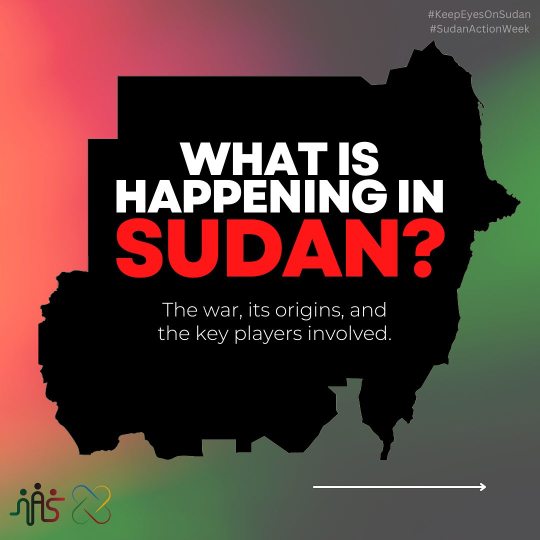
Via NasAlSudan
December 17 2023. #KeepEyesOnSudan #SudanActionWeek
Swipe through to build a foundational understanding of the war, its origins, and the key players involved. For actionable ways to support those in Sudan, check the link in our bio. Stay tuned for more posts this week.

Transcript:
National:
On April 15, a war broke out in Sudan's capital city of Khartoum between the Sudanese Armed Forces (SAF), and a paramilitary group known as the Rapid Support Forces (RSF).
Since then, eight months of conflict has led to major destruction of Khartoum's infrastructure, the most developed region of Sudan, with fighting also spreading to the regions of Darfur in the west and Kordofan in the south.
Civilians in conflict zones have been forcibly displaced, under threat of physical and sexual violence, particularly by the RSF, which has looted, destroyed, and settled in people's homes.
Regional:
In the western region of Darfur, a campaign of ethnic cleansing is being carried out by the RSF targeting the Masalit tribe. Allegations of genocide have been levied against the RSF.
Reports have just emerged that fighting has now spread to Wad Madani in Al Gezira state, which houses nearly 500,000 IDPs from Khartoum.
Key figures:
Abdel Fattah al Burhan Head of SAF
Omar El-Bashir Deposed Dictator of Sudan
Mohamed Dagalo (Hemidti) Head of RSF

Transcript:
Sudan: the war in numbers
A humanitarian "catastrophe"
24.7 million in need of critical humanitarian assistance
70-80% of hospitals out of service in conflict areas
19 million children are out of school
20.3 million people acutely food insecure. 4.9 million facing emergency hunger levels
6.7 million displaced [5.4 million IDPS, 1.3 million refugees]
7,000+ cholera cases an increase of +136% over the past month
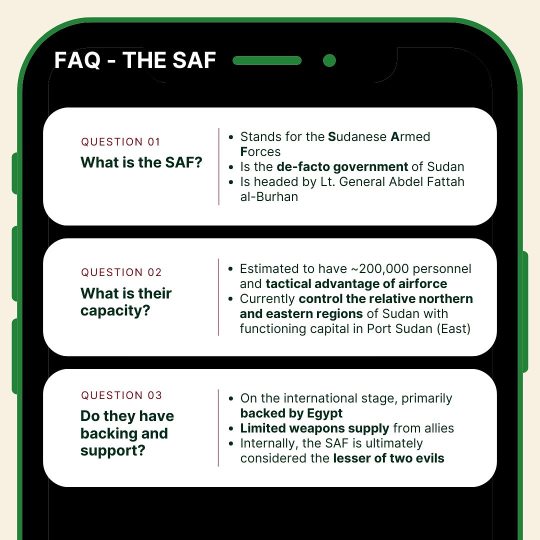
Transcript:
FAQ - THE SAF
QUESTION 01: What is the SAF?
Stands for the Sudanese Armed Forces
Is the de-facto government of Sudan
Is headed by Lt. General Abdel Fattah al-Burhan
QUESTION 02 What is their capacity?
Estimated to have ~200,000 personnel and tactical advantage of airforce
Currently control the relative northern and eastern regions of Sudan with functioning capital in Port Sudan (East)
QUESTION 03 Do they have backing and support?
On the international stage, primarily backed by Egypt
Limited weapons supply from allies
Internally, the SAF is ultimately considered the lesser of two evils
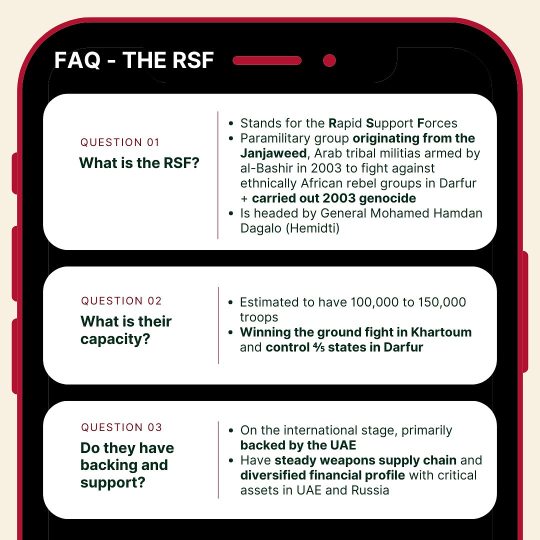
Transcript:
FAQ - THE RSF
QUESTION 01 What is the RSF?
Stands for the Rapid Support Forces
Paramilitary group originating from the Janjaweed, Arab tribal militias armed by al-Bashir in 2003 to fight against ethnically African rebel groups in Darfur + carried out 2003 genocide
Is headed by General Mohamed Hamdan Dagalo (Hemidti)
QUESTION 02 What is their capacity?
Estimated to have 100,000 to 150,000 troops
Winning the ground fight in Khartoum and control 4/5 states in Darfur
QUESTION 03 Do they have backing and support?
On the international stage, primarily backed by the UAE
Have steady weapons supply chain and diversified financial profile with critical assets in UAE and Russia
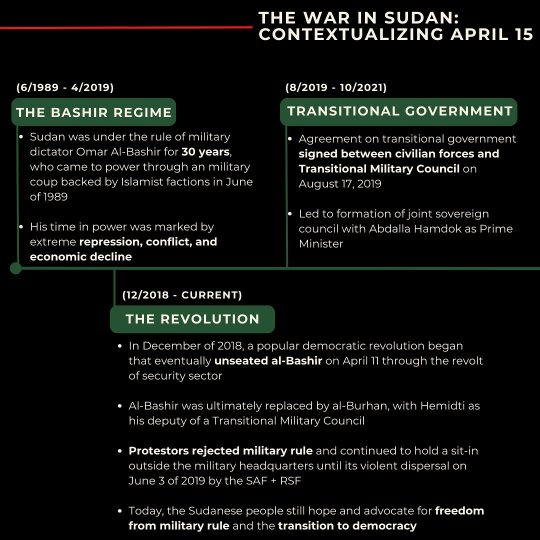
Transcript:
THE WAR IN SUDAN: CONTEXTUALIZING APRIL 15
(6/1989 - 4/2019) THE BASHIR REGIME
Sudan was under the rule of military dictator Omar Al-Bashir for 30 years, who came to power through an military coup backed by Islamist factions in June of 1989
His time in power was marked by extreme repression, conflict, and economic decline
(12/2018 CURRENT) THE REVOLUTION
In December of 2018, a popular democratic revolution began that eventually unseated al-Bashir on April 11 through the revolt of security sector
Al-Bashir was ultimately replaced by al-Burhan, with Hemidti as his deputy of a Transitional Military Council
Protestors rejected military rule and continued to hold a sit-in outside the military headquarters until its violent dispersal on June 3 of 2019 by the SAF + RSF
Today, the Sudanese people still hope and advocate for freedom from military rule and the transition to democracy
(8/2019-10/2021) TRANSITIONAL GOVERNMENT
Agreement on transitional government signed between civilian forces and Transitional Military Council on August 17, 2019
Led to formation of joint sovereign council with Abdalla Hamdok as Prime Minister

Transcript:
(10/2021 CURRENT)THE OCT 25, 2021 COUP
Burhan and Hemidti carry out military coup overthrowing civilian counterparts
They draw power from international legitimization despite prolonged mass protests in Sudan
(12/2022) THE FRAMEWORK AGREEMENT
In December of 2022, civilians put out a framework agreement signed onto by SAF and RSF + civil society groups and political parties meant to return to a transitional government
Key part of agreement: question of integration of the RSF into the SAF
Parties were to finalize the agreement and sign on April 1; RSF and SAF ultimately disagreed on integration timeline with RSF wanting 10 years and the SAF wanting 2
(12/2022-4/2023) THE LEAD UP TO APRIL 15
As framework agreement negotiations failed, both parties began mobilizing troops in capital of Khartoum in days leading up to April 15
Residents of Khartoum awoke to the sounds of gunfire on April 15 and by noon, the RSF had seized Meroe airport in the Northern state
Conflict today considered a battle for power between the two generals they are too far in to walk back

Transcript:
FRAMING ALLIANCES
Sudanese Armed Forces (SAF):
Egypt
Israel (Foreign Ministry)
Islamists
Iran
Saudi Arabia
Ukraine (SOF)
Armed Groups
Rebel groups that had taken up arms against the central government in the Bashir Era are forced to ally with the SAF due to the RSF's ethnic cleansing campaign. They include:
Justice and Equality Movement (Gibril Ibrahim)
Sudan Liberation Movement/Army (Minni Minawi)
Gathering of Sudan Liberation Forces (Abdallah Yahya)
Rapid Support Forces (RSF):
Israel (Mossad)
Libya (Khalifa Haftar)
United Arab Emirates
Central African Republic
Russia (Wagner Group)
Chad
Arab Tribal Leaders
Arab tribal leaders across the Western region of Darfur have pledged their allegiance and support to the RSF, with members of the tribes across the Sahel crossing into Sudan to join the RSF's assault as well.
Key tribes include: Beni Halba, Tarjam, Habaniya, Fallata, Misseriya, Taaysha, Rizeigat
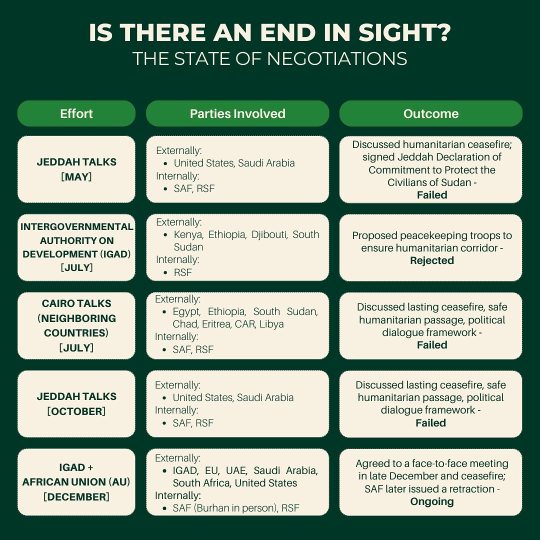
Transcript:
IS THERE AN END IN SIGHT?
THE STATE OF NEGOTIATIONS
Effort: JEDDAH TALKS [MAY]
Parties involved: Externally: United States, Saudi Arabia Internally: SAF, RSF
Outcome: Discussed humanitarian ceasefire; signed Jeddah Declaration of Commitment to Protect the Civilians of Sudan - Failed
Effort: INTERGOVERNMENTAL AUTHORITY ON DEVELOPMENT (IGAD) [JULY]
Parties Involved: Externally: Kenya, Ethiopia, Djibouti, South Sudan Internally: RSF
Outcome: Proposed peacekeeping troops to ensure humanitarian corridor - Rejected
Effort: CAIRO TALKS (NEIGHBORING COUNTRIES) [JULY]
Parties Involved: Externally: Egypt, Ethiopia, South Sudan, Chad, Eritrea, CAR, Libya Internally: SAF, RSF
Outcome: Discussed lasting ceasefire, safe humanitarian passage, political dialogue framework - Failed
Effort: JEDDAH TALKS [OCTOBER]
Parties Involved: Externally: United States, Saudi Arabia Internally: SAF, RSF
Outcome: Discussed lasting ceasefire, safe humanitarian passage, political dialogue framework - Failed
Effort: IGAD + AFRICAN UNION (AU) [DECEMBER]
Parties Involved: Externally: IGAD, EU, UAE, Saudi Arabia, South Africa, United States Internally: SAF (Burhan in person), RSF
Outcome: Agreed to a face-to-face meeting in late December and ceasefire; SAF later issued a retraction - Ongoing
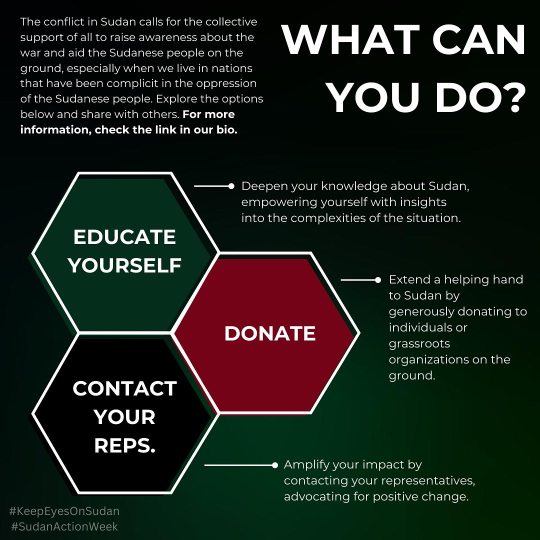
Transcript:
The conflict in Sudan calls for the collective support of all to raise awareness about the war and aid the Sudanese people on the ground, especially when we live in nations that have been complicit in the oppression of the Sudanese people. Explore the options below and share with others. For more information, check the link in our bio.
WHAT CAN YOU DO?
EDUCATE YOURSELF
Deepen your knowledge about Sudan, empowering yourself with insights into the complexities of the situation.
DONATE
Extend a helping hand to Sudan by generously donating to individuals or grassroots organizations on the ground.
CONTACT YOUR REPS.
Amplify your impact by contacting your representatives, advocating for positive change.
#sudan#keep eyes on sudan#KeepEyesOnSudan#Sudan Action Week#SudanActionWeek#i hope the way i formatted it is good#i saw a few hours ago that rsf retreated from wad madani outskirts
368 notes
·
View notes
Note
I've never made any connections between Worm and the Captain America mythos before. Spill some ink?
Okay, so from a purely aesthetic perspective, the gimme is Miss Militia. She's the most obvious "Captain Patriotic" in the roster, she has the power of GUN, she's the only one who actively buys into the mythology of America specifically. She's a Kurdish woman occupying an aesthetic niche generally held by a rugged squinty white guy. She's an output of the melting pot narrative. She's sort of a rendering of what a grounded superhero who somehow became very aesthetically into America might look like. Not in the craven marketing-driven way of Homelander or Comedian, not in the jingoistic maniac way of USAgent or Peacemaker. She buys it in the broadly left-liberal (USamerican connotation of that term) safe, friendly, reclamative way. Why, what a great rehabilitation of the archetype!
She's also deeply, deeply afraid of rocking the boat. She's got a deepseated childhood trauma related to the bad things that happen when she puts herself in a leadership role. She goes along to get along. When she's proactive, it's usually to point a gun at Tattletale to stop her from upsetting the status quo. She sits through a lot of situations where Steve Rogers, as commonly modeled, would probably plant himself like a tree by the river of truth and go, "Hey, this is fucked up." She more or less capitulates to Undersider domination of the city, in a way that predisposes us to think of her as a voice of reason after all these total nuts that Skitter's been up against- but would Taylor "to relinquish control is a form of ego death" Hebert really be willing to leave someone in charge of the local Protectorate branch who she thought couldn't be corralled? She looks like a beacon, but doesn't- indeed, probably can't- ever truly behave like one. I mean, you can debate the on-the-spot morality of any given one of her judgement calls, that's actually one of the less exhausting Worm Morality Debates to have- but in aggregate, a person in American flag garb who actually meaningfully criticizes the paramilitary organization they're part of is not gonna survive long in that role!
So again, she's the gimme from an aesthetic standpoint. But what I don't really see a lot of discussion of is how Cauldron plays into the riff.
Captain America is institutional, but in a comically morally uncomplicated way. The serum was originally mana from heaven, granted to a living saint, conveniently divorced from any nitty-gritty sausage-making process and even-more conveniently divorced from the horrible consequences of giving the, uh, the U.S government a replicable super soldier process. And in fairness to Captain America, this is 100 percent something the overall mythos eventually patched to my satisfaction; the sausage-making process eventually revealed as prototypical government fuckery driven by human experimentation on black servicemen, the overall Marvel Setting littered with failed attempts by the U.S. Government to recreate that golden goose so they can have their fun new jackboots. (In Ultimate Marvel, this is how almost all contemporary superhumans were created, and this is a state of affairs with a body count in the millions or billions.)
Cauldron draws you in with the same noble rhetoric about greater goods, the same one-off proprietary irreplicable formula- but you don't get the luxury afterwards of representing nothing but the dream. You aren't partnering up with a plucky crank scientist with a heart of gold. You're selling your soul to an organization with an agenda. The narrative makes no bones about the fact that everything you do is fundamentally tainted by the fact you opted into an end product created through torture, kidnapping and human experimentation. You don't get to pull a Kamen Rider by going rogue or opting out or making good use of the fruit of the poisoned tree; you are owned, and everything you do has this Damocles sword hanging over your head- when are the people who bankrolled this going to come to collect?
So that's the question of "who would willingly dress like that" covered, and the question of who creates a serum like that. What about the question of who takes a serum like that? I'd argue that Eidolon is the examination of that. Pre-Cauldron David reads to me like pre-serum Steve Rogers viewed through a significantly bleaker lens. They're both sickly kids desperate to serve, rocketed to the pinnacle of human capability by an experimental procedure. But for Steve Rogers, the crisis was that he had a specific vision of the world and was frustrated by his inability to carry it out. Before the serum he picked fights over what was right and wrong and got his ass handed to him; afterwards he picked those same fights and just started winning instead. The serum neatly solved a problem he had, and to the extent that his mindset is influenced by his pre-serum experiences, it's generally constructive; a desire to protect the weak, help the helpless, an appreciation for people who stand up for what's right even when they're clearly gonna get pancaked for their trouble. So ultimately there's no dark side, downside, or underlying neurosis ascribed to his initial impulse to take that serum.
But with David, it's not a tragic case of the spirit being willing but the flesh being weak. He isn't a preternaturally-noble soul, out to represent the best elements of the American ideal- he kind of represents the inverse, a guy who's been failed at every level while utterly convinced that he's the problem. He's actively suicidal because he's a wheelchair-bound epileptic in an economically-depressed socially-backwards rural town in the 1980s, and he's spent his 18 years of life internalizing the idea that he's worse than useless unless he can somehow find a way provide value to something larger than himself. Doctor Mother finds him in the aftermath of a suicide attempt spurred by his rejection from the army- and he didn't even want to join the army specifically, necessarily, he just needed his situation to be literally anything else, and he took what he thought he could get. And then he finds himself in a position to become a superhero, so he does that, molds himself into that, subordinates himself to that, builds his entire sense of self and values around the value he can provide in that role. No grand design or sacred principles carried over through the metamorphosis. Just relief at finally, finally having something that looks like an answer to the question of what he's supposed to do.
And you know, you know that if Steve Rogers was facing down the barrel of being depowered, he'd smile and nod, he'd Cincinnatus that shit. It's happened before. But for David, the emotional trauma and self-worth issues that caused him to roll the dice on a Steve-Rogers treatment never really went away. When would it? He's been Providing Value as a ten-ton Hammer Against Evil for thirty years. No family, no social life. Certainly, no incentive on his handler's part to lance his Atlas complex. So he barrels towards atrocity in the name of remaining useful. Admittedly, this is where the comparison breaks down in a significant way; Captain America is much more of a symbol than he is an irreplicable powerhouse, so it's not catastrophic if he's taken off the board. Eidolon is so unbelievably powerful that his myopia and self-centeredness actually do align with a real problem everyone else is gonna have if he loses his powers. But in terms of the starting points- I think that Steve Rogers embodies the myth about why you'd want to join the army that badly. Eidolon is, I think, much more closely modelling why you'd actually want to join the army that badly.
#apologies for the delay in responding#worm#wildbow#parahumans#worm meta#eidolon#thoughts#meta#miss militia
551 notes
·
View notes
Text
🇱🇧Hezbollah Militia heading towards the border
10 notes
·
View notes
Text
Let's talk about Sudan-
TRANSCRIPT UNDER CUT

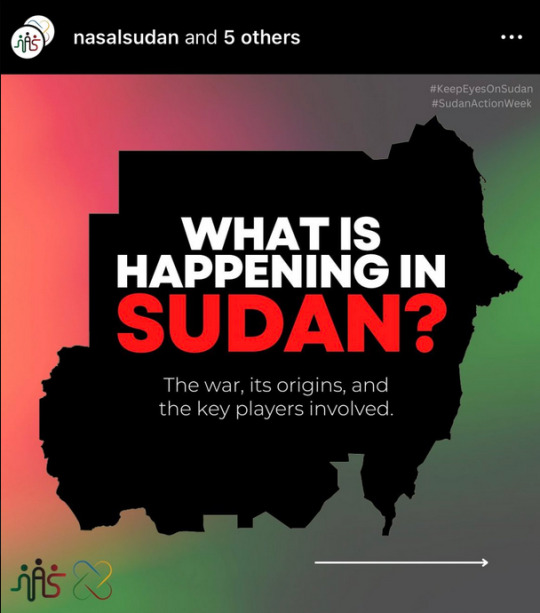
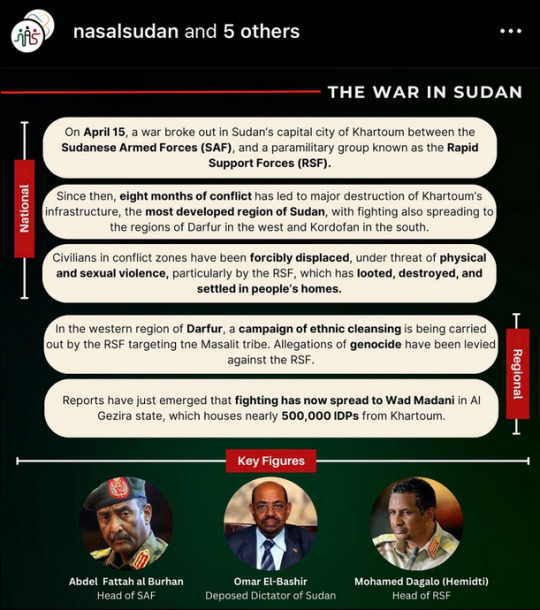
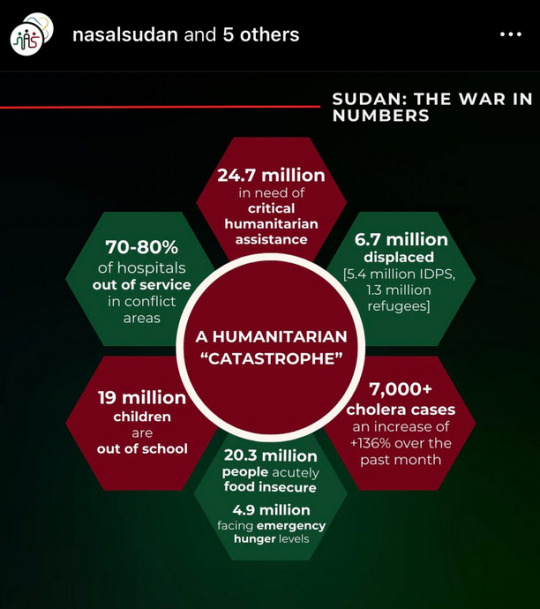

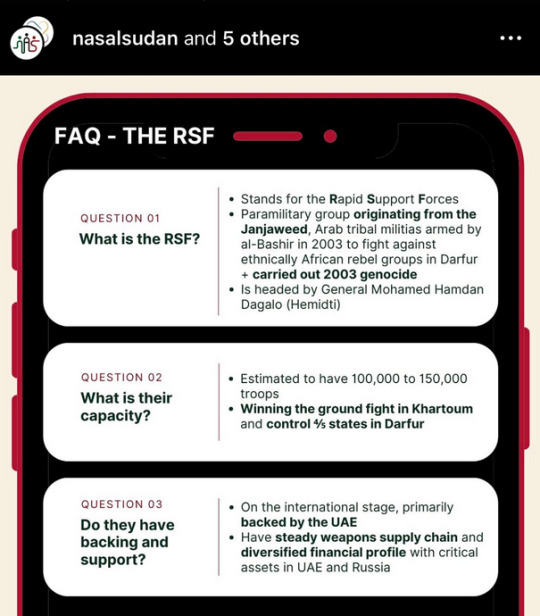
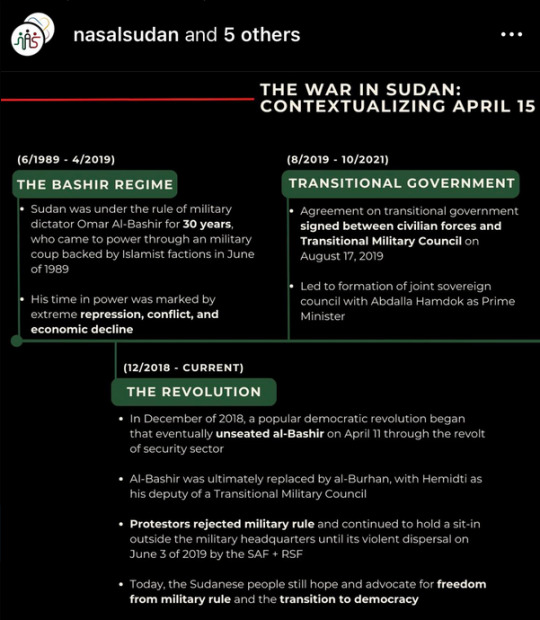
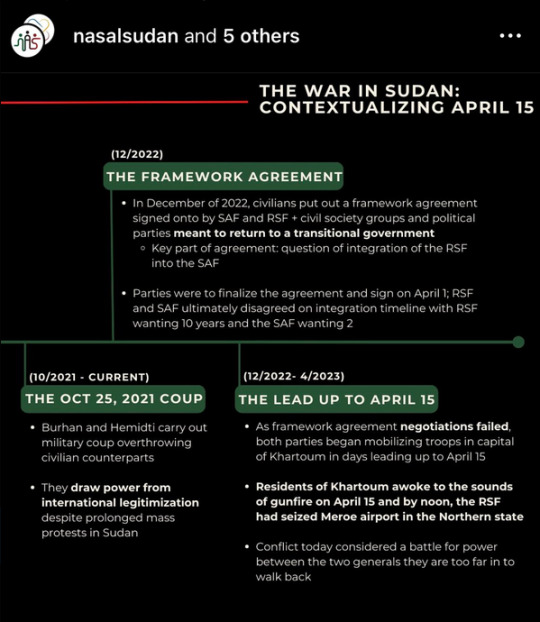
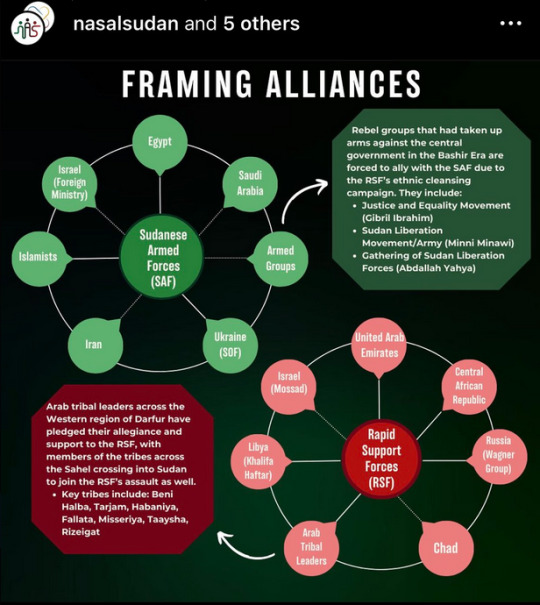
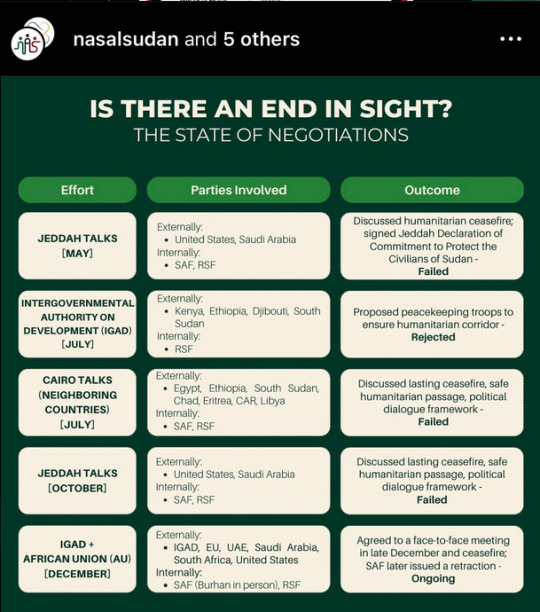
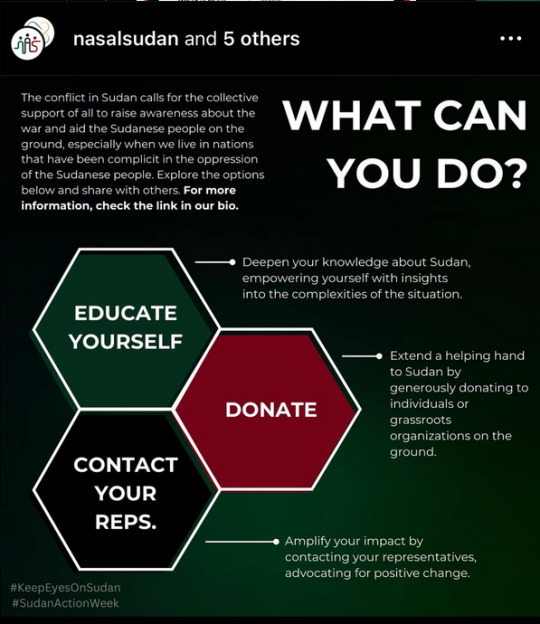
Transcript:
What is happening in Sudan?
The war, its origins, and the key players involved.
The war in Sudan
On April 15, a war broke out in Sudan's capital city of Khartoum between the Sudanese Armed Forces (SAF), and a paramilitary group known as the Rapid Support Forces (RSF).
Since then, eight months of conflict has led to major destruction of Khartoum's infrastructure, the most developed region of Sudan, with fighting also spreading to the regions of Darfur in the west and Kordofan in the south.
Civilians in conflict zones have been forcibly displaced, under threat of physical and sexual violence, particulary by the RSF, which has looted, destroyed, and settled in people's homes.
In the western region of Darfur, a campaign of ethnic cleansing is being carried out by the RSF targeting the Masalit tribe. Allegations of genocide have been levied against the RSF.
Reports have just emerged that fighting has now spread to Wad Madani in AI Gazira state, which houses nearly 500,00 IDPs from Khartoum.
Key Figures: Abdel Fattah al Burhan (head of SAF), Omar El-Bashir (deposed dictator of Sudan), Mohamed Dagalo (Hemidti) (head of RSF)
Sudan: the war in numbers
24.7 million in need of critical humanitarian assistance
6.7 million displaced [5.4 million IDPS, 1.3 million refugees]
7,000+ cholera cases an increase of +136% over the past month
20.3 million people acutely food insecure- 4.9 million facing emergency hunger levels
19 million children are out of school
70-80% of hospitals out of service in conflict areas
FAQ - THE SAF
What is the SAF?
stands fro the Sudanese Armed Forces
is the de-facto government of Sudan
is headed by Lt. General Abdel Fattah al-Burhan
What is their capacity?
estimated to have aprox. 200,000 personnel and tactical advantage of airforce
currently control of relative northern and eastern regions of Sudan with functioning capital in Port Sudan (East)
Do they have backing and support?
on the international stage, primarily backed by Egypt
limited weapons supply from allies
internally, the SAF is ultimately considered the lesser of two evils
FAQ - THE RSF
What is the RSF?
stands fro Rapid Support Forces
paramilitary group originating from the Janjaweed, Arab tribal militias armed by al-Bashir in 2003 to fight against ethnically African rebel groups in Darfur + carried out 2003 genocide
is headed by General Mohamed Hamdan Dagalo (Hemidti)
What is their capacity?
estimated to have 100,000 to 150,000 troops
winning the ground fight in Khartoum and control 4/5 states in Darfur
Do they have backing and support?
on the international stage, primarily backed by the UAE
have steady weapons supply chain and diversified financial profile with critical assets in UAE and Russia
The war in Sudan: contextualizing April 15
6/1989 - 4/2019 - The Bashir Regime
Sudan was under the rule of military dictator Omar Al-Bashir for 30 years, who came to power through an military coup backed by Islamist factions in June of 1989
His time in power was marked by extreme repression, conflict, and economic decline
12/2018 - current - The revolution
In December of 2018, a popular democratic revolution began taht eventually unseated al-Bashir on April 11 through the revolt of security sector
Al-Bashir was ultimately replaced by al-Burhan, with Hemidti as his deputy of a Transitional Military Council
Protestors rejected military rule and continued to hold a sit-in outside the military headquarters until its violent dispersal on June 3 of 2019 by the SAF + RSF
Today, the Sudanese people still hope and advocate for freedom from the military rule and the transition to democracy
8/2019 - 10/2021 - Transitional Government
Agreement on transitional government signed between civilian forces and Transitional Military Council on August 17, 2019
Led to formation to joint sovereign council with Abdalla Hamdok as Prime Minister
10/2021 - Current - The Oct 25, 2021 Coup
Burhan and Hemidti carry out military coup overthrowing civilian counterparts
They draw power from international legitimization despite prolonged mass protests in Sudan
12/2022- The Framework Agreement
In December of 2022, civilians put out a framework agreement signed onto by SAF and RSF + civil society groups and political parties meant to return to a transitional government - key part of agreement: question of integration of the RSF into the SAF
Parties were to finalize the agreement and sign on April 1; RSF and SAF ultimately disagreed on the integration timeline with RSF wanting 10 years and the SAF wanting 2
12/2022-4/2023 - The Lead up to April 15
As framework agreement negotiations failed, both parties began mobilizing troops in capital of Khartoum in days leading up to April 15
Residents of Khartoum awoke to the sounds of gunfire on April 15 and by noon, the RSF had seized Meroe airport in the Northern state
Conflict today considered a battle of power between the two generals they are too far in to walk back
Framing alliances
Sudnese Armed Forces (SAF):
Saudi Arabia
armed groups- rebel groups that had taken up arms against the central government in the Bashir Era are forced to ally with the SAF due to the RSF's ethnic cleansing campaign. They include: Justice and Equality Movement (Gibril Ibrahim), Sudan Liberation Movement/Army (Minni Minawi), Gathering of Sudan Liberation Forces (Abdallah Yahya)
Ukraine (SOF)
Iran
Islamists
Israel (Foreign Ministry)
Egypt
Rapid Support Forces (RSF):
United Arab Emirates
Central African Republic
Russia (Wagner Group)
Chad
Arab Tribal Leaders- Arab tribal leaders across the Western region of Darfur have pledged their allegiance and support to the RSF, with members of the tribes across the Sahel crossing into Sudan to join the RSF's assault as well. Key tribes include: Beni Halba, Tarjam, Habaniya, Fallata, Misseriya, Taaysha, Rizeigat
Libya (Khalifa Haftar)
Israel (Mossad)
Is there an end in sight?
The state of negotiations
Effort- Jeddah Talks [May]
Parties Involved- Externally: United States, Saudi Arabia. Internally: SAF, RSF
Outcome: discussed humanitarian ceasefire; signed Jeddah Declaration of Commitment to Protect the Civilians of Sudan- FAILED
Effort- Intergovernmental authority on development (IGAD) [July]
Parties Involved- Externally: Kenya, Ethiopia, Djibouti, South Sudan . Internally: RSF
Outcome: proposed peacekeeping troops to ensure humanitarian corridor-REJECTED
Effort- Cairo talks (neighboring countries) [July]
Parties Involved- Externally: Egypt, Ethiopia, South Sudan, Chad, Eritrea, CAR, Libya. Internally: SAF, RSF
Outcome: discussed lasting ceasefire, safe humanitarian passage, political dialogue framework-FAILED
Effort- Jeddah talks [October]
Parties Involved- Externally: United States, Saudi Arabia . Internally: SAF, RSF
Outcome: discussed lasting ceasefire, safe humanitarian passage, political dialogue framework-FAILED
Effort- IGAD + African Union (AU) [December]
Parties Involved- Externally: IGAD, EU, UAE, Saudi Arabia, South Africa, United States. Internally: SAF (Burhan in person), RSF
Outcome: agreed to face-to-face meeting in late December and ceasefire; SAF later issued a retraction-ONGOING
What can you do?
The conflict in Sudan calls for the collective support of all to raise awareness about war and aid the Sudanese people on the ground, especially when we live in nations that have been complicit in the oppression of the Sudanese people. Explore the potions below and share with others.
Educate yourself- deepen your knowledge about Sudan, empowering yourself with insights into the complexities of the situation.
Donate- extend a helping hand to Sudan by generously donation to individuals or grassroots organizations on the ground.
Contact your reps- amplify your impact by contacting your representatives, avocating for positive change
221 notes
·
View notes
Text
Twenty years ago, American celebrities like George Clooney and Ryan Gosling urged us all to “Save Darfur” from the brutal conflict and ethnic cleansing campaign occurring under Sudanese leader Omar al-Bashir.
Bashir is now gone, but the militias he empowered have been carrying out brutal ethnic cleansings yet again in at least some parts of Darfur, according to a report released Wednesday from Human Rights Watch.
The report details horrific, ethnically targeted crimes like the killing of men and boys from ethnic Massalit and other non-Arab tribes in West Darfur, as well as rape, other forms of sexual violence, torture, other war crimes, and crimes against humanity. The Massalit and other ethnic groups in the Darfur region endured similar agonies in the early 2000s, when a group of militias known as the Janjaweed — which have now evolved into a powerful paramilitary force called the Rapid Support Forces (RSF) — crushed uprisings in the region.
Today, the RSF and the Sudanese Armed Forces (SAF) are locked in a ferocious, deadly power struggle that began last April, quashing the country’s long struggle to transition to democracy. Since the war broke out, 8.7 million people have been displaced, the risk of famine is imminent, and thousands have been killed, with no end in sight as much of the globe turns toward Israel’s war in Gaza.
57 notes
·
View notes